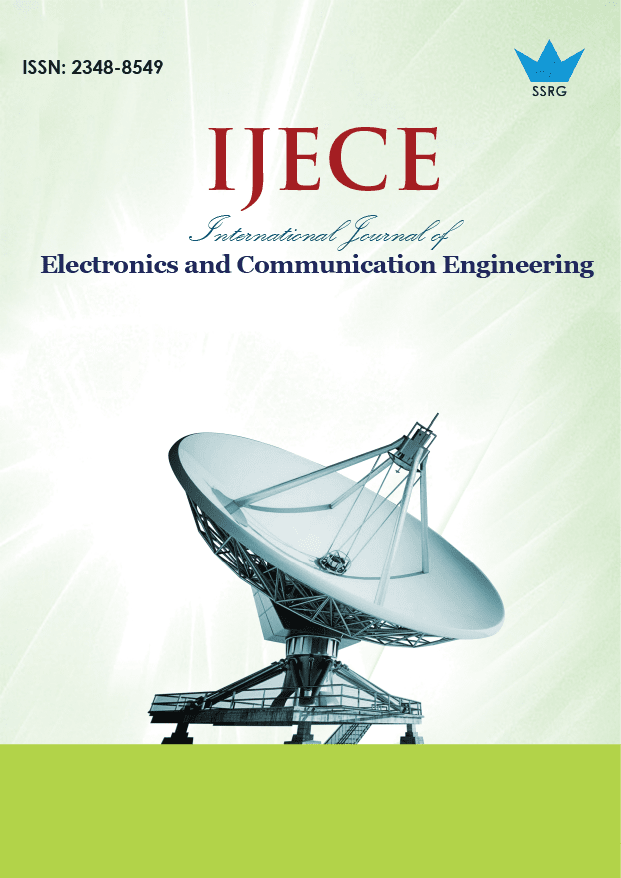Hybrid Metaheuristic-Driven Intrusion Detection System Using Opto-Romar Swarm Bee Genesis Optimization on IoT Network Data

| International Journal of Electronics and Communication Engineering |
| © 2025 by SSRG - IJECE Journal |
| Volume 12 Issue 9 |
| Year of Publication : 2025 |
| Authors : Swetha A, Ramesh Sekaran, Annamalai S |
How to Cite?
Swetha A, Ramesh Sekaran, Annamalai S, "Hybrid Metaheuristic-Driven Intrusion Detection System Using Opto-Romar Swarm Bee Genesis Optimization on IoT Network Data," SSRG International Journal of Electronics and Communication Engineering, vol. 12, no. 9, pp. 153-161, 2025. Crossref, https://doi.org/10.14445/23488549/IJECE-V12I9P113
Abstract:
The Internet of Things (IoT) devices have rapidly grown in numbers, posing critical threats in the process of securing networks against emerging cyber-attacks. Traditional Intrusion Detection Systems (IDS) suffer from low accuracy, are not flexible and are inefficient in handling massive multidimensional IoT data. To mitigate these shortcomings, the study presents a new hybrid metaheuristic-based IDS system that combines Cat-Scale normalization technique, the feature selection algorithm: Mutualk-Best, the optimization technique Opto-Romar Swarm Bee Genesis and the hyperparameter optimization algorithm: Evalmax Hyper Net. The framework is developed to provide a balanced representation of features, minimize redundancy, enhance convergence, and learn dynamic parameters to provide robust intrusion detection. Experimental results on the IoT-IDS dataset show the effectiveness of the proposed work. The framework recorded 95% accuracy, 97% precision, 98.6% recall and 98.4% F1-score with an AUC of 0.9999, utilizing better results compared to other techniques of IDS like BESO-HDL and Modified Isolation Forest. These findings support that the combination of swarm intelligence and genetic algorithms, along with adaptive tuning, can present a better detection performance with the ability to scale in highly complex IoT environments. The results indicate the framework as a promising future-proof IDS solution. Future work will consider the deployment of real-world IoT to resource-limited devices, robustness against adversarial attack, and variants to edge and mobile computing tasks.
Keywords:
Cat-scale normalization, Hyperparameter tuning, Intrusion Detection System, IoT security, Metaheuristic optimization, Mutual-best, Opto-Romar Model.
References:
[1] Shubhkirti Sharma, Vijay Kumar, and Kamlesh Dutta, “Multi-Objective Optimization Algorithms for Intrusion Detection in IoT Networks: A Systematic Review,” Internet of Things and Cyber-Physical Systems, vol. 4, pp. 258-267, 2024.
[CrossRef] [Google Scholar] [Publisher Link]
[2] Tarek Gaber et al., “Industrial Internet of Things Intrusion Detection Method using Machine Learning and Optimization Techniques,” Wireless Communications and Mobile Computing, vol. 2023, no. 1, pp. 1-15, 2023.
[CrossRef] [Google Scholar] [Publisher Link]
[3] Amjad Rehman Khan, “Deep Learning for Intrusion Detection and Security of Internet of Things (IoT): Current Analysis, Challenges, and Possible Solutions,” Security and Communication Networks, vol. 2022, no. 1, pp. 1-13, 2022.
[CrossRef] [Google Scholar] [Publisher Link]
[4] Ajay Kumar et al., “Intrusion Detection and Prevention System for an IoT Environment,” Digital Communications and Networks, vol. 8, no. 4, pp. 540-551, 2022.
[CrossRef] [Google Scholar] [Publisher Link]
[5] Ayoub Si-Ahmed, Mohammed Ali Al-Garadi, and Narhimene Boustia, “Survey of Machine Learning based Intrusion Detection Methods for Internet of Medical Things,” Applied Soft Computing, vol. 140, 2023.
[CrossRef] [Google Scholar] [Publisher Link]
[6] Inês Martins et al., “Host-Based IDS: A Review and Open Issues of an Anomaly Detection System in IoT,” Future Generation Computer Systems, vol. 133, pp. 95-113, 2022.
[CrossRef] [Google Scholar] [Publisher Link]
[7] Arash Heidari, and Mohammad Ali Jabraeil Jamali, “Internet of Things Intrusion Detection Systems: A Comprehensive Review and Future Directions,” Cluster Computing, vol. 26, pp. 3753-3780, 2023.
[CrossRef] [Google Scholar] [Publisher Link]
[8] Joseph Bamidele Awotunde, and Sanjay Misra, “Feature Extraction and Artificial Intelligence-Based Intrusion Detection Model for a Secure Internet of Things Networks,” Illumination of Artificial Intelligence in Cybersecurity and Forensics, pp. 21-44, 2022.
[CrossRef] [Google Scholar] [Publisher Link]
[9] Rashmita Khilar et al., “Artificial Intelligence‐Based Security Protocols to Resist Attacks in Internet of Things,” Wireless Communications and Mobile Computing, vol. 2022, no. 1, pp. 1-10, 2022.
[CrossRef] [Google Scholar] [Publisher Link]
[10] Yakub Kayode Saheed, and Sanjay Misra, “A Voting Gray Wolf Optimizer-Based Ensemble Learning Models for Intrusion Detection in the Internet of Things,” International Journal of Information Security, vol. 23, pp. 1557-1581, 2024.
[CrossRef] [Google Scholar] [Publisher Link]
[11] Mousa’b Mohammad Shtayat et al., “An Improved Binary Spider Wasp Optimization Algorithm for Intrusion Detection for Industrial Internet of Things,” IEEE Open Journal of the Communications Society, vol. 6, pp. 2926-2944, 2025.
[CrossRef] [Google Scholar] [Publisher Link]
[12] Yakub Kayode Saheed et al., “A Novel Hybrid Autoencoder and Modified Particle Swarm Optimization Feature Selection for Intrusion Detection in the Internet of Things Network,” Frontiers in Computer Science, vol. 5, pp. 1-13, 2023.
[CrossRef] [Google Scholar] [Publisher Link]
[13] Mohammed Aljebreen et al., “Enhancing DDoS Attack Detection using Snake Optimizer with Ensemble Learning on Internet of Things Environment,” IEEE Access, vol. 11, pp. 104745-104753, 2023.
[CrossRef] [Google Scholar] [Publisher Link]
[14] Abdullah Alzaqebah et al., “A Modified Grey Wolf Optimization Algorithm for an Intrusion Detection System,” Mathematics, vol. 10, no. 6, pp. 1-16, 2022.
[CrossRef] [Google Scholar] [Publisher Link]
[15] Sandhya Ethala, and Annapurani Kumarappan, “A Hybrid Spider Monkey and Hierarchical Particle Swarm Optimization Approach for Intrusion Detection on Internet of Things,” Sensors, vol. 22, no. 21, pp. 1-18, 2022.
[CrossRef] [Google Scholar] [Publisher Link]
[16] Fahad F. Alruwaili et al., “Red Kite Optimization Algorithm with Average Ensemble Model for Intrusion Detection for Secure IoT,” IEEE Access, vol. 11, pp. 131749-131758, 2023.
[CrossRef] [Google Scholar] [Publisher Link]
[17] Khalid A. Alissa et al., “Planet Optimization with Deep Convolutional Neural Network for Lightweight Intrusion Detection in Resource-Constrained IoT Networks,” Applied Sciences, vol. 12, no. 17, pp. 1-15, 2022.
[CrossRef] [Google Scholar] [Publisher Link]
[18] Louai A. Maghrabi et al., “Enhancing Cybersecurity in the Internet of Things Environment using Bald Eagle Search Optimization with Hybrid Deep Learning,” IEEE Access, vol. 12, pp. 8337-8345, 2024.
[CrossRef] [Google Scholar] [Publisher Link]
[19] Orieb AbuAlghanam et al., “Fusion-Based Anomaly Detection System using Modified Isolation Forest for Internet of Things,” Journal of Ambient Intelligence and Humanized Computing, vol. 14, pp. 131-145, 2022.
[CrossRef] [Google Scholar] [Publisher Link]

 10.14445/23488549/IJECE-V12I9P113
10.14445/23488549/IJECE-V12I9P113